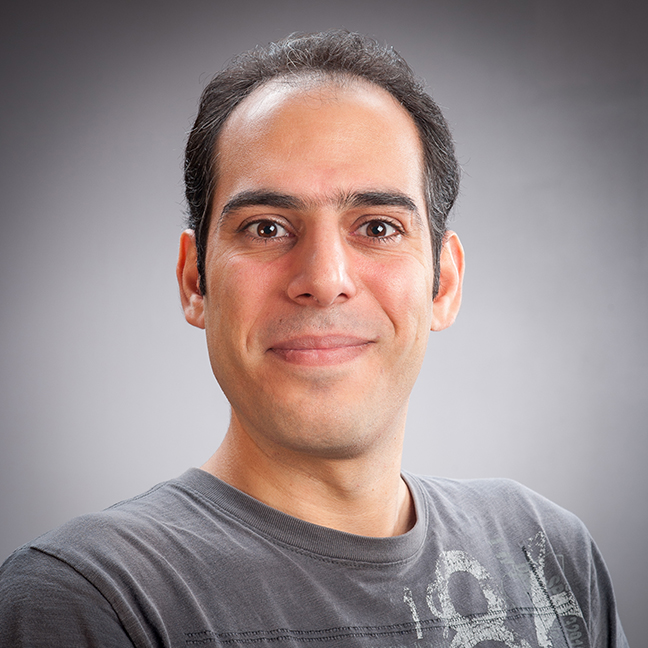ECEN/XMUT 202 Digital Electronics
Second Semester, 2023/2024
Prescription
An introduction to the design and construction of digital electronic instruments. Following a review of binary arithmetic and Boolean algebra, the course will focus on the design of digital circuits using both combinatorial and sequential logic. Further work will study microprocessor architectures, programming and interfacing and the conversions of digital and analogue signals.
Learning Objectives
Students who pass this course will be able to:
- Describe the properties, construction and operating characteristics of digital integrated circuits from the most important CMOS Logic families. (BE graduate attribute 3(a))
- Describe the basic logic operations using Boolean algebra, truth tables and logic circuits and be able to simplify complex combinatorial logic circuits via Boolean algebra and the Karnaugh map method. ((BE graduate attribute 3(a))
- Understand the use of various types of flip-flops in creating sequential circuits and their uses in synchronisation, frequency division and counting. (BE graduate attribute 3(a,b))
- Design synchronous sequential circuits. ((BE graduate attribute 3(b,c))
- Be able to program a microprocessor in assembly language. ((BE graduate attribute 3(a, b))
- Be able to implement a real-world interfacing to a microprocessor. ((BE graduate attribute 3(a, b))
There will be two lectures per week during the semester. Practical lab assignments require students to apply the concepts taught during the lectures.
There will be in-person lectures in XMUT. The labs will be conducted by the co-teacher in XMUT.
Lecturers
Course Organisation details
Dates, Times, and Rooms: Lectures and Laboratories
The course will have lectures on Tuesday and Thursday.
A schedule of lecture topics, Labs and assignment dates is on the website. Copies of the lecture slides will be available online.
Set Texts and Recommended Readings
There is no required textbook for the course.
The optional textbooks for ECEN 202 are:
- Digital Systems, by R J Tocci
- Electronics A Systems Approach, by Storey may be used as additional reading
Assessment
This course will be assessed through assignments, lab reports and two tests.
Note: If you fail the course the first time and need to take the make-up exam, the make-up exam will only be part of your final grade - your final grade will be 40% of your coursework marks and 60% from the make-up exam.
Assignment Marking and Late Penalties
LATE DAY POLICY for the
ASSIGNMENTS. Work submitted:
- 1 day after the deadline will receive a maximum mark of 90%,
- 2 days after the deadline will receive a maximum mark of 80%,
- 3 days after the deadline will receive a maximum mark of 70%,
- 4 days after the deadline will receive a maximum mark of 60%,
- 5 days after the deadline will receive a maximum mark of 50%.
No work will be accepted after releasing the solutions unless previously arranged with the course lecturer.
Workload
In order to maintain satisfactory progress in XMUT 202, you should plan to spend 10 hours per week on this paper.
A plausible and approximate breakdown for these hours would be:
Lectures: 1-3 hours per week
Laboratories and tutorials: 2 - 4 hours per week
Writing lab reports/assignments: 3 hours
Reading, review, preparation: 2 hours
The primary means of communication outside of the lecture will be the ECEN202 website at
https://ecs.wgtn.ac.nz/Courses/XMUT202_2024T1. You should make a bookmark for the course home page because you will need to access it frequently.
The course website has important information about the course, including:
- Announcements,
- Course schedule (with links to copies of the lecture slides and additional reading materials (if any)),
- Files and assignments-related information,
- Assignment submission system.
There is also a WeChat group. The lecturer will answer questions on WeChat and may make urgent announcements. All communications in the WeChat room must be in English.
Academic Integrity and Plagiarism.
Academic integrity means that university staff and students, in their teaching and learning, are expected to treat others honestly, fairly and with respect at all times. It is not acceptable to mistreat academic, intellectual or creative work that has been done by other people by representing it as your own original work.
Plagiarism is presenting someone else's work as if it were your own, whether you mean to or not. "Someone else's work" means anything that is not your own idea. Even if it is presented in your own style, you must acknowledge your sources fully and appropriately. This includes:
- The work of other students or staff
- Material from books, journals or any other printed source
- Information from the internet
- Software programs and other electronic material
- Designs and ideas
- The organisation or structuring of any such material
Notes
You must always properly cite any work of others that you include in your submition. If you are ever in doubt as to whether some action you have taken may be considered plagiarism, you should consult your lecturer and/or clearly state on the submitted work the extent of the contribution from others.
Strictly follow the rules below:
- Do not give your answers to other students – you may get zero!
- If someone submits work that is the same as or very similar to yours, you should expect to be asked to explain and, if the explanation is not satisfactory, to receive zero mark for the assessment and/or the course, if repeated.
- Do not copy another student’s work (assignment/test/final exam), you will get zero.
- Do not ask other students for their answers – it is stealing their marks. You may both get zero.
- If there is a record of more than two previous cheating events in any VUW course, you will be referred to the Dean.
Plagiarism and Code
If you are completing a programming project, you may be allowed to use code segments from a software library on the web, from model solutions in previous courses you have taken, or even from other students. If you do this, you must clearly indicate all of the code that has come from another source and state the source. Unless your course requirements state otherwise, you are not required to cite algorithms, data structures or source code provided with the assignment or from lecture notes. If you are in doubt about the use of code that you have not written yourself you should check with your lecturer before submitting the program. If you have had help from someone else (other than a tutor), it is always safe to state the help that you got. For example, if you had help from someone else in writing a component of your code, it is not plagiarism as long as you state (eg, as a comment in the code) who helped you in writing the method.
Classroom Policies
- No eating, drinking, or smoking.
- Respect classmates’ ideas, opinions, and questions.
- No behaviour that prevents other students from learning.
- You are welcome to visit the instructor’s office during his office hours.
- Take good care of the laboratory facilities.


